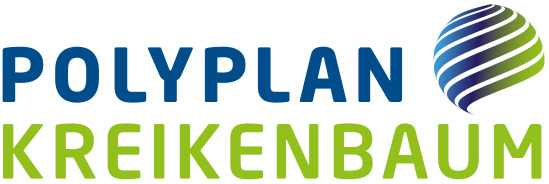This lake is intended to absorb and delay the release of rainwater that cannot be infiltrated. Due to the high dirt load in the precipitation, the organic input into the water body is very high. This increases the trophic level of the lake and provides excellent growth conditions for phytoplankton. This would result in a strong growth of algae and worsen the visual impression of the central plant, which in the worst case could lead to an overturning of the water with strong odor development.
Therefore, a water concept was created to ensure good water quality.
On one hand, water is to be continuously drawn from the lake and treated, and on the other, the accumulating rainwater is to be treated before it is discharged into the lake. This is to ensure that as few nutrients as possible enter the water cycle. Phytoplankton are heavily dependent on these nutrients for growth and reproduction. Phosphorus in particular usually plays the role of limiting nutrient in this case. Therefore, the target phosphorus concentration should be below 0.03 mg P/l. However, rainfall already contains 0.3 mg/l, which makes the importance of water treatment obvious even before discharging into the lake.
Precipitation from adjacent areas that cannot be directly infiltrated and is collected in 4 shafts distributed around the lake. During the typhoon season, the incoming water volume can go up to 6,400 m³/h. However, in addition to the rainwater collection pipes, a skimmer is also connected to each shaft. The skimmers are able to take up to 83 m³/h. The skimmers are equipped with a variable overflow edge and therefore draw off the surface water to remove the dirt, garbage and leaves floating on the surface. The water inflow from the individual skimmers can also be individually throttled by means of inground sliders. In addition, the pumps behind the skimmers in particular, which are positioned in the direction of the wind, are started up in order to extract the surface dirt. The water from the skimmers is collected in the individual shafts in an pre-chamber. The water then flows through perforated plates into the large shaft chamber. This is to retain the coarse impurities and dirt. These pre-chambers have their own opening to allow the accumulated dirt to be extracted.
From each of the shafts, 2 pumps deliver the water into a circular pipeline. Each pump is capable of pumping up to 800 m³/h. In normal operation, however, this line is much smaller and varies with water and air temperature. The higher these temperatures are, the higher the pump output would be to efficient draw off the phytoplankton that grows much faster at warm temperatures. If the rainfall from a typhoon is greater than the amount of water that can be carried away by the pumps in the shafts, the excess water can be automatically discharged directly into the lake by the skimmers. However, this is only provided for especially during heavy rainfall, otherwise too many nutrients would be introduced into the cycle. Since the water level in the shaft is quickly equalized with the lake water level by the skimmer, an IDM (inductive flow meter) is required for each rainwater inlet pipe for each of the collecting shafts. As soon as the IDM detects a rainwater inflow, the pumps are ramped up in proportion to the amount of rainwater.






